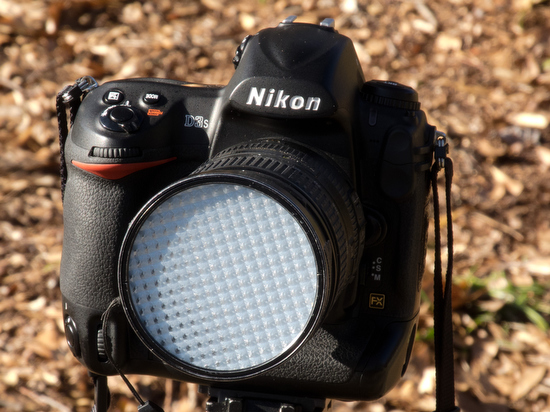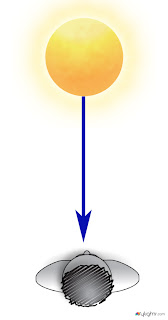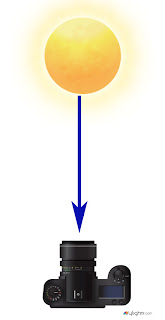I just recently upgraded my ExpoDisc. The upgrades come with the Portrait Warming Filters. This little addition is saving me more steps in Adobe Lightroom and giving me more time to enjoy life.
I have been using the ExpoDisc since 2005. ExpoDisc was invented by George Wallace to help his students at San Jose State to get better exposures with Kodachrome 25. He studied with Ansel Adams and Minor White where he learned to master the zone system.
I wrote about how to use the ExpoDisc a while back, but here is the basic idea of how it works.
 |
| ExposDisc goes in front of the lens and then you use it to get an incident reading rather than a reflective reading of the light. |
 |
| Notice the direction of the light hitting the subject. You move to the same position to get the light reading below. |
 |
| Point the camera toward the direction of the light that is falling on the subject. |
In Adobe Lightroom in the Develop Module you can adjust the color temperature and this is where I often would warm up my photos.
Now I no longer need to do this. I now am using the +1 warming filter which introduces just a little warmth into all my photos.
The cool thing is if you don't want to do this for any reason you don't have to use the filter. If you want it even warmer then just use the +2 or start stacking the filters.
The Auto White Balance [AWB] setting on your camera is looking at the scene in front of the lens and then it will read all the color it sees and will try and make it 18% gray. So if you have a red wall you are photographing the camera will all cyan to make this red wall appear gray.
If someone is in that photo then their skin will have a cyan color cast.
The problem with 18% gray cards is depending on the angle you hold them you can get a glare which will shift the camera color settings. I have found that every other system I have tried that uses reflective light reading [you point the camera at the device] is not as accurate than when the camera is put into the light making an incident reading.
The second benefit of the newer ExpoDisc V 2.0 is it comes with a carrying case. When I first bought my ExpoDisc years ago it came in the standard filter case like all other filters you bought. This new case you can put on your belt if you like and have it readily available.
When I first bought my ExpoDisc I paid more than $120 for the device. Today it comes with more options and only costs $49.95.
If you consistently use the ExpoDisc I promise you that you will notice a consistency in skin tone with all your images that will make people notice.




